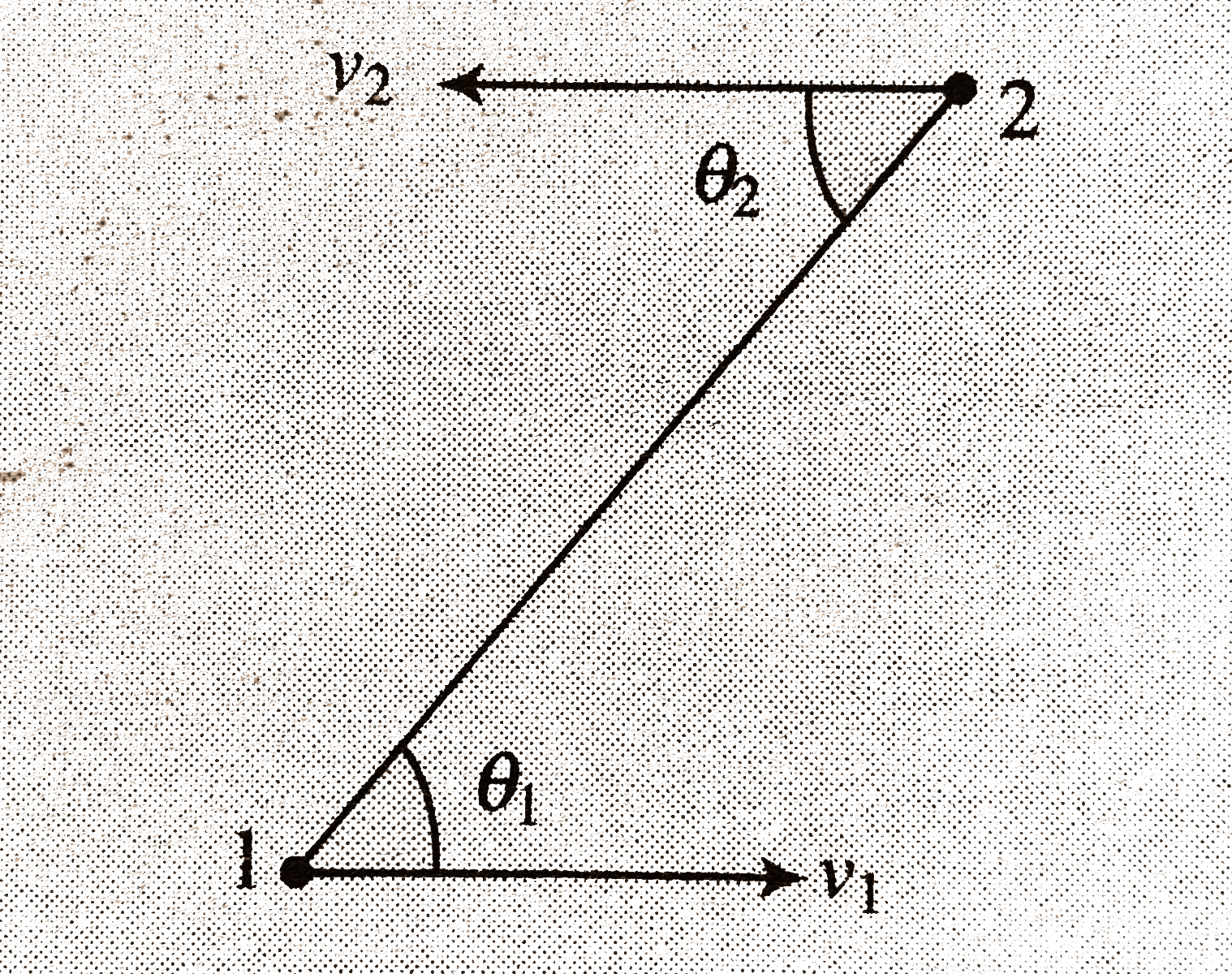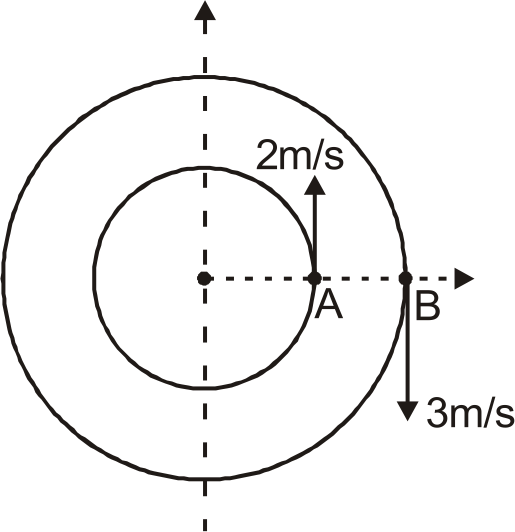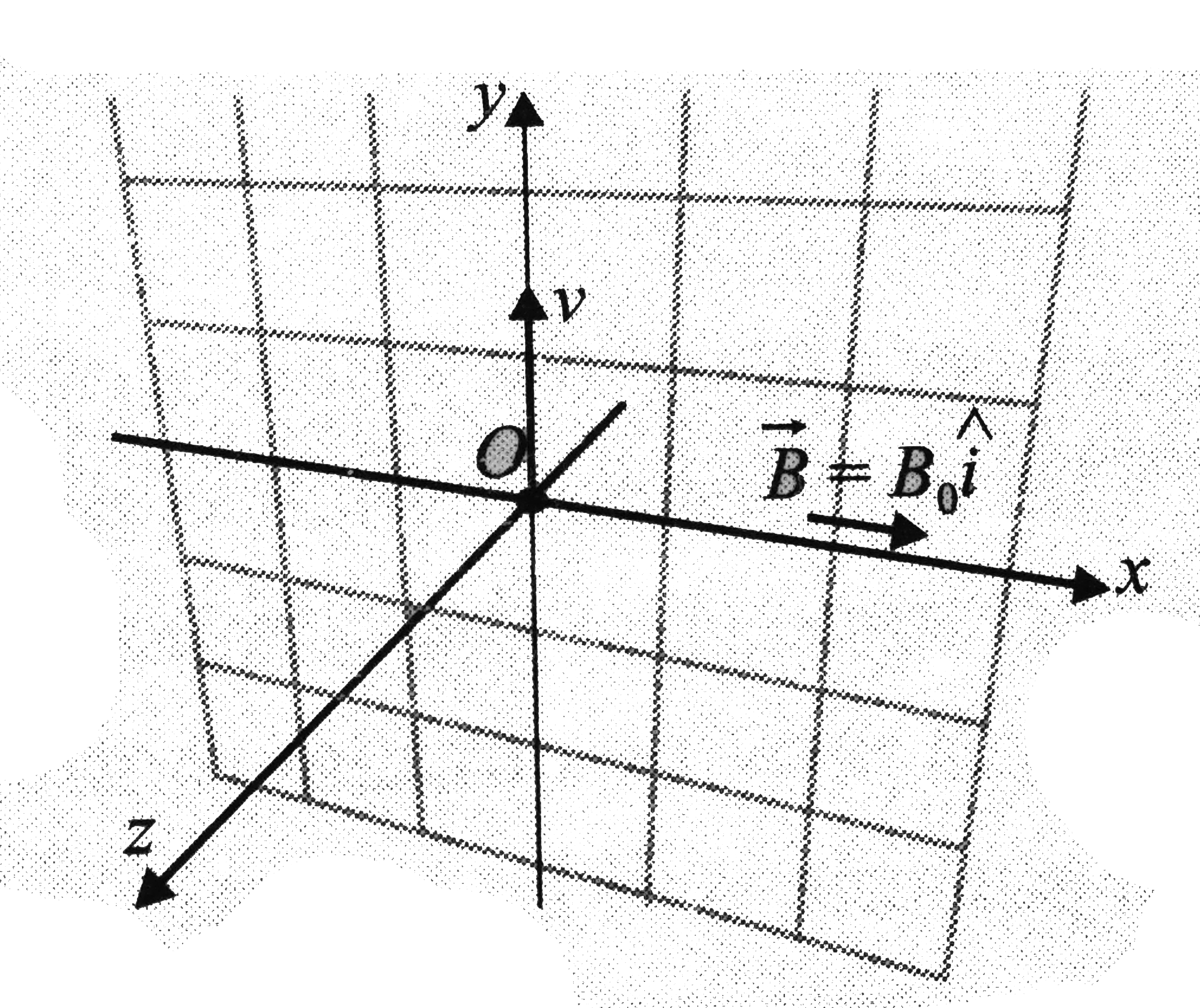Two particles A and B, move with constant velocities →v1 and →v2. At the initial moment their position vectors are →r1 and →r2 respectively. The condition for particle A and B for their collision is
→r1−→r2=→v1−→v2
(oversetrightarrowr_1-oversetrightarrowr_2=oversetrightarrowv_2-oversetrightarrowv_1)∣oversetrightarrowr_1-oversetrightarrowr_2=oversetrightarrowv_2-oversetrightarrowv_2|)
→r1.→v1=→r2.→v2
→r1×→v1=→r2×→v2
Step by step video & image solution for Two particles A and B, move with constant velocities vec(v_(1))" and "vec(v_(2)). At the initial moment their position vectors are vec(r_(1))" and "vec(r_(2)) respectively. The condition for particle A and B for their collision is by Physics experts to help you in doubts & scoring excellent marks in Class 11 exams.
Updated on:21/07/2023Topper's Solved these Questions
Similar Questions
Two particles, 1 and 2, move with constant velocities v1 and v2. At the initial moment their radius vectors are equal to r1 and r2. How must these four vectors be interrelated for the particles to collide?
View SolutionThe position vector of A , B are →aand→b respectively. The position vector of C is (5→a3)−→bthen
View Solution
Knowledge Check
Two point masses 1 and 2 move with uniform velocities →v1 and →v2, respectively. Their initial position vectors are →r1 and →r2, respectively. Which of the following should be satisfied for the collision of the point masses?
A→r1−→r2|→r2−→r1|=→v2−→v1|→v2−→v1|B→r2−→r1|→r2−→r1|=→v2−→v1|→v2−→v1|C→r2−→r1|→r2+→r1|=→v2−→v1|→v2+→v1|D→r2−→r1|→r2+→r1|=→v2−→v1|→v2+→v1|If two bodies are in motion with velocity →v1 and →v2:
A|vrel|=√v21+v22B|→–––(rel)|=v1±v2∣Cvre=0Dvrel>c (speed of light)Two particles of masses m1 and m2 in projectile motion have velocities →v1 and →v2 , respectively , at time t=0. They collide at time t0. Their velocities become →v'1 and →v'2 at time 2t0 while still moving in air. The value of ∣∣∣(m1→v'1+m2→v'2)−(m1→v1+m2→v2)∣∣∣
AzeroB(m1+m2)gt0C2(m1+m2)gt0D12(m1+m2)gt0
Two particles 1and2 move with velocities →v1 and →v2 making the angles θ1andθ2 with the line joining them, respectively. Find angular velocity of relative→1.
 .
.
View SolutionParticle A of mass m1 moving with velocity (√3ˆi+ˆj)ms−1 collides with another particle Bof mass m2 which is at rest initially. Let →V1and→V2 be the velocities of particles A and B after collision respectively. If m1=2m2 and after collision →V1−(ˆi+√3ˆj)ms−1, the angle between →V1and→V2 is :
View SolutionTwo particles A and B are revolving with constant angular velocity on two concentric circles of radius 1m and 2m respectively as shown in figure. The positions of the particles at t = 0 are shown in figure. The positions of the particles at t=0 are shown in figure. if mA=2kg,mB=1kg and →PA and →PB are linear momentum of the particle then what is the maximum value of ∣∣→PA+→PB∣∣ in kg-m/sec in subsequent motion of two particles.

View SolutionA charge particle of mass m and charge q is projected with velocity v along y-axis at t=0.

Find the velocity vector and position vector of the particle →v(t)and→r(t) in relation with time.
View SolutionIf →F is the force acting in a particle having position vector →r and →τ be the torque of this force about the origin, then
View Solution
